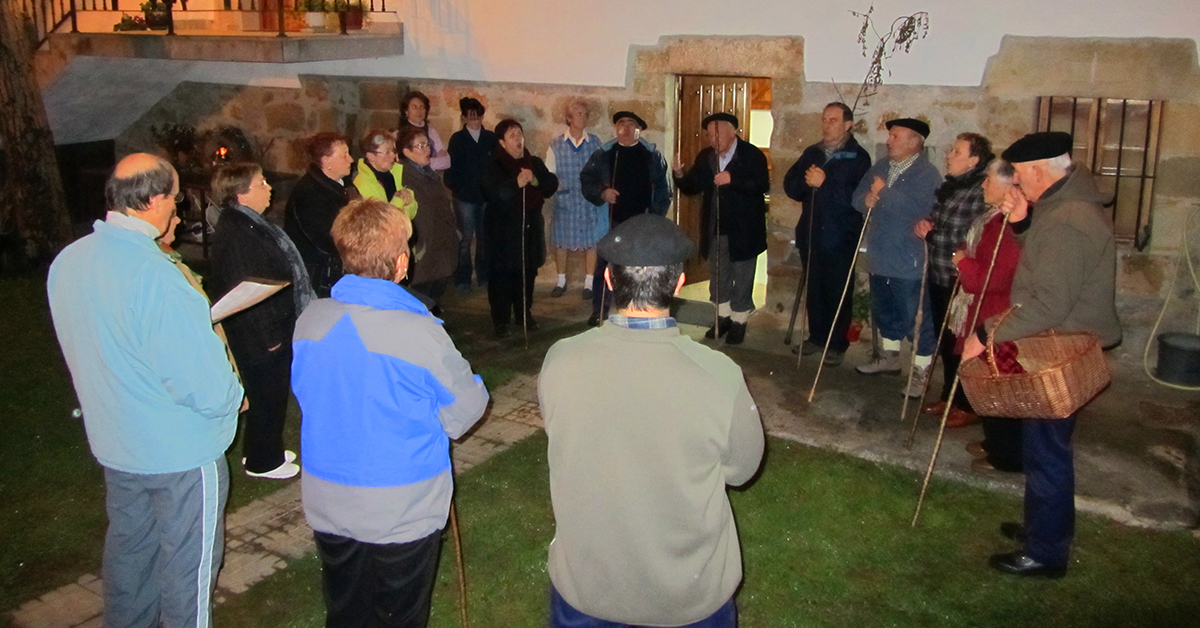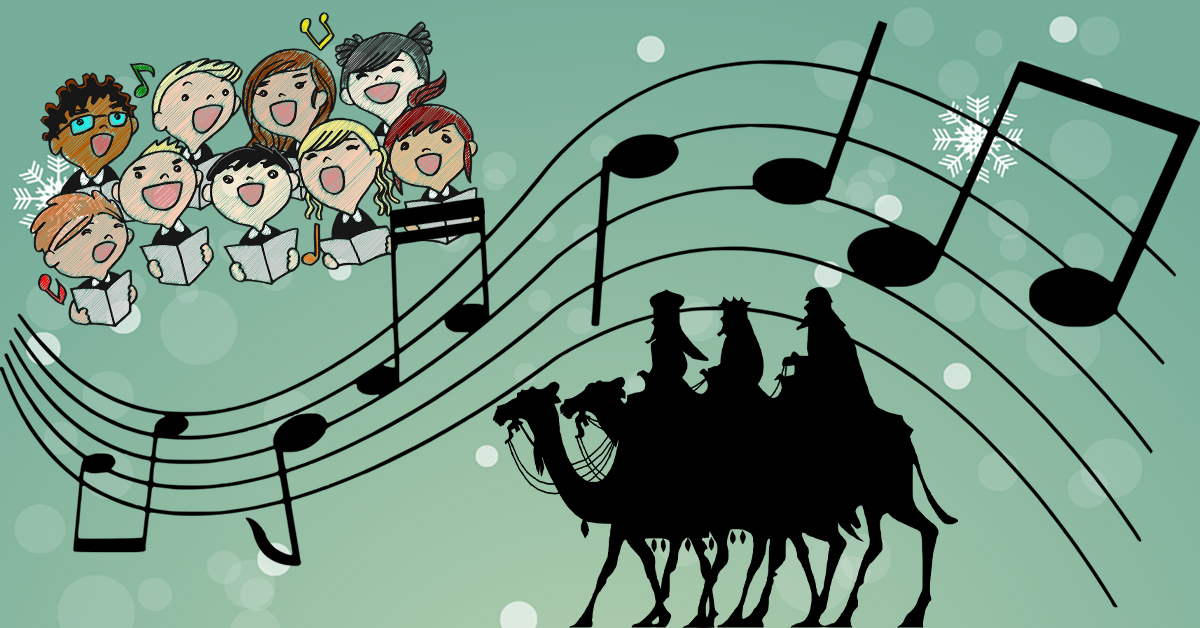Basque ethnography at a glance
In our culture, winter is a time of darkness, cold, only a few hours of daylight, the harvest is gathered in and there is not much work to do on the farms.
Young people, above all, would collect alms in the form of food. Some of these singing rounds, the Marijesiak or Abendua – as the Olentzero still is – were performed in large organised groups.
Yet there are two rounds where the children used to meet up and go wassailing at homes of their neighbours and close family members. We say used to meet up because it is a custom that has fallen out of fashion.

“Abendua” Ibarruri collecting alms at night. Photo credit: Jon Mikel Gainza. Labayru Fundazioa Photographic Archive.
Christmastide in traditional culture was marked by a series of feast days (St. Barbara, St. Nicholas, Feast of the Immaculate Conception, St. Lucia and St. Thomas) leading up to the very heart of the festivity (Christmas, Feast of the Holy Innocents, New Year and Epiphany). This timeline was marked by a series of cyclical repetitions, such as the myth of human origin and of Christianity itself, the renewal rituals (biblical sequencing, generational or natural rhythms, etc.) or divinatory processes located at the start of the year, ceremonial aspects of the life and annual cycles, along with the different solemn celebrations.
I know many of you can’t hide your disgust when you see snails. And others of you will be drooling as soon as you see the dish. Well, I should point out to everyone that snails are a great source of protein; an ideal food, as they help build muscles.
Snails were also widely used as a cure throughout Euskal Herria. For example, snail slime mixed with sugar was sometimes taken to cure whooping cough. The slime was also used to make ointments, as its constituents are very good for the skin.
In the past, some wealthy farmsteads (etxe fuerteak) had farm servants (morroi) to help with the farming and livestock work. Urban bourgeois households often had a woman or servant as domestic help. There could be more than one: a cook, nursemaid… If the family was wealthy, the employee wore a uniform. It was more unusual to have a chauffeur, who was also known as a mecánico (mechanic), gardener, etc.
In the Gernikaldea region, the servants were usually from the same town or village, a neighbouring one or from the local area. In middle-class families, the staff would often be treated as one of the family and the relations between master and farm servant or mistress and maid were good.




